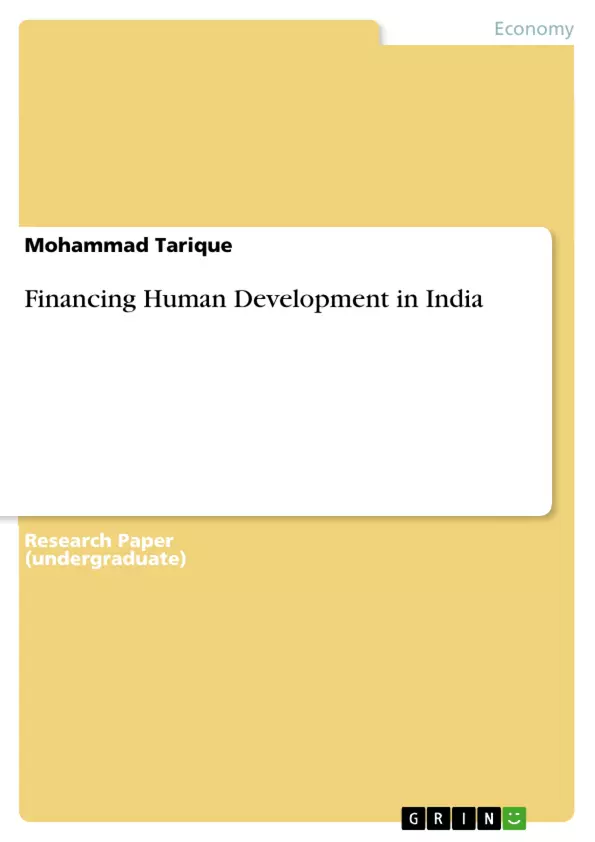Human development, which is about expanding people’s choices, builds on shared natural resources. Promoting human development requires addressing sustainability— locally, nationally and globally— and this can and should be done in ways that are equitable and empowering. On the need for financing the human development, we observe that even the best macroeconomic policies may fail unless they are complemented by effective policies -policies that link the macro and the micro level and that bear directly on people live. Chief among these are the level and structure of government social expenditures and the design of the policy measures and programmes they support. The present paper tries to make a study on the financing of human development in India. The entire paper is divided into four parts. The first part is introductory which gives a brief account of the basic concept of human development and the various measures through which financing of human development could be observed. The second part of the paper talks about the trends in HDI in India vis-à-vis some of developed and developing countries. The third segment discusses about the trends in India’s social sector expenditure as it affects the major dimensions of inclusive development like poverty alleviation, employment generation, health, education, and social welfare. The last section of the paper is given to concluding observations.
Inhaltsverzeichnis (Table of Contents)
- Introduction
- A Comparative Analysis of HDI in India
- Trends in Social Sector Expenditure
- Concluding Observations
Zielsetzung und Themenschwerpunkte (Objectives and Key Themes)
This paper aims to analyze the financing of human development in India, exploring its relation to economic growth and social well-being. It examines how public spending on human development can be designed and monitored to effectively address key challenges.
- Human Development Index (HDI) trends in India compared to developed and developing countries.
- The role of social sector expenditure in promoting inclusive development, including poverty alleviation, employment generation, health, education, and social welfare.
- The impact of government social expenditures on human development outcomes.
- The analysis of various ratios used to monitor public spending on human development: the public expenditure ratio, the social allocation ratio, the social priority ratio, and the human expenditure ratio.
- The importance of linking macro and micro-level policies for effective human development financing.
Zusammenfassung der Kapitel (Chapter Summaries)
The first chapter provides an introduction to the concept of human development and explores various measures for financing it. It highlights the importance of promoting human development through equitable and empowering approaches, emphasizing sustainability at local, national, and global levels.
The second chapter presents a comparative analysis of HDI in India, examining its position relative to other developed and developing countries. It discusses the correlation between HDI and factors such as per capita income, education levels, and life expectancy, highlighting the need for increased focus on human development indicators in India.
The third chapter explores the trends in social sector expenditure in India, analyzing its impact on various dimensions of inclusive development, including poverty alleviation, employment generation, health, education, and social welfare.
Schlüsselwörter (Keywords)
This paper focuses on human development, financing human development, Human Development Index (HDI), social sector expenditure, social allocation ratio, social priority ratio, human expenditure ratio, inclusive development, poverty alleviation, employment generation, health, education, and social welfare.
- Quote paper
- Mohammad Tarique (Author), 2011, Financing Human Development in India, Munich, GRIN Verlag, https://www.grin.com/document/184408



